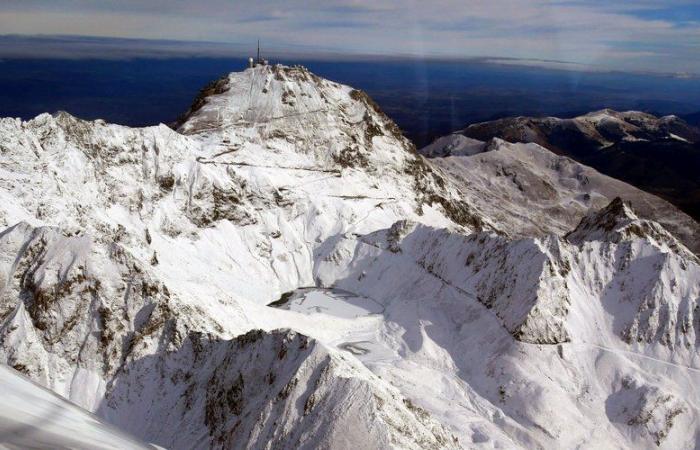the essential
The explosion of whooping cough cases in France, “unheard of in 40 years” with nearly 6,000 cases since January, has awakened memories of the “whooping cough flights” of yesteryear in flying clubs. If the pleasure of the first flight is guaranteed for children, no scientific study has however established their effectiveness.
Bordatella: this is the name of evil. And more precisely Bordatella Pertusis, the whooping cough bacillus which causes fever, runny noses and especially coughing for many weeks. Until the appearance of antibiotics and then the vaccine (compulsory for infants since 2018), this respiratory disease, which mainly affects children, could cause significant mortality. In the 1950s, there were still 50,000 to 80,000 cases of whooping cough per year in France, which caused an average of a thousand deaths annually. The violent coughing fits exhausted the little patients.
Read also :
“Unheard of in 40 years”: should we be worried about the explosion of whooping cough cases in France in recent weeks?
But since the end of the 1930s… “For those who had been coughing for a long time, we sometimes did ‘pertussis flights or baptisms'”, remembers Tony Lucantonio, former president of the Bigorre flying club, in Tarbes Laloubère, having done so a few in the 80s-90s. “You had to go high, quickly, stay there for a certain time, then go down in stages to spare the passengers. The mountain air was also good for the sick,” he summarizes.
The opportunity to take a flight over the Pic du Midi
“I remember doing four or five in the 80s, but we rarely got feedback on the effectiveness. People were supposed to call us back to tell us if it worked, only two of my passengers did” , specifies Christian Falliero, one of the flying club’s memories. At worst, sick children and sometimes their mothers who accompanied them brought back the unique memory of a flight above the Pic du Midi. However, it was indeed a German doctor who, in 1928; had observed that a flight at altitude could calm a cough.
A former war pilot, he had “taken in his biplane a kid who was coughing. After a half-hour flight at more than 1,500 m, he noticed that the kid’s cough was becoming rarer and that he seemed perked up He started the experiment again and published a few lines on the subject in an aeronautical magazine”, explained Jean-Philippe Chivot on the AeroVFR website in 2019 before specifying that “in 1938, a medical pilot at the flying club of . Alsace, Doctor Willy Matter, [aller s’inspirer] of the German experience because he finally saw a use of the plane for therapeutic flights […] The main flying clubs in France therefore offered whooping flights shortly before the war which were part of their propaganda for aviation.”
Two protocols, from “Strasbourg” and “Bordeaux”
“Whooping cough flights” which would take advantage of this period and then the post-war period… “In fact, living conditions favored the spread of the disease and government policy, wanting to develop the training of military pilots, distributed subsidies and planes to flying clubs”, analyzes the author. Two flight protocols then existed: “from Strasbourg”, that of Dr Matter, and “from Bordeaux”, anonymous.
For the first, Christian Falliero and Tony Lucantonio detail: “We had to do a quick climb to more than 3,000/3,200 m, for us it was simple, it was above the Pic du Midi. There we did a long level at this altitude, 20 minutes in general, then we descended to 1,500 m for another level before coming back down to land. In total, it was a “3×20” flight, three phases of 20 minutes.
On the “Bordeaux” side? It was “a quick climb to 1200m, a 3 minute level and two sharp turns, a quick descent to 500m, two turns, a quick climb to 1200m and (finally!) a quick descent back to the ground. This protocol, “quite sporty”, only lasted 25 minutes and was therefore less expensive…” notes Jean-Philippe Chivot.
In 2013 in Vosges-Matin, the chief pilot of the Vosges flying club Jacky Arnoux noted a return in demand and recalled having also practiced these “popular baptisms” carried out by approved pilots in the 1980s. “I even remember taking flights reimbursed by social security,” he confided, remembering that “the kids got better in the following hours.”
A study in 1985
In 1985, however, a study was carried out on the effectiveness of this type of flight and on the protocol to be followed by the pilot. It covered 1,952 “pert-night flights” conducted by 742 pilots from 143 flying clubs. Conclusions? “The various protocols followed by the pilots, as well as the declarative certificates of post-flight improvements, made the results of the investigation unusable,” indicates Jean-Philippe Chivot. And the study drew the conclusion from this “unusable” that “flying at altitude was ineffective against the disease”. A round trip to the Aiguille du Midi cable car with a one-hour break at the summit or a Paris-Nice in a pressurized cabin at 2,500 m “were certainly as effective”, she added, notes the author.
“Hypoxia, the depletion of oxygen and dry air at altitude, and the rapid change in barometric pressure can have an effect on the respiratory tract and undoubtedly provide relief to some people, but for the moment, medically speaking, nothing has been demonstrated”, also recalls today Dr Jean-François Patte, Toulouse practitioner approved in aerospace medicine. In the meantime, pilots or flying clubs still offer, here and there, these “dopportionate flights” confirms a quick look on the internet. The first principle of medicine is not to harm the patient… an escape to altitude does no harm, say the defenders of this flight to those who could make the practice cough.






